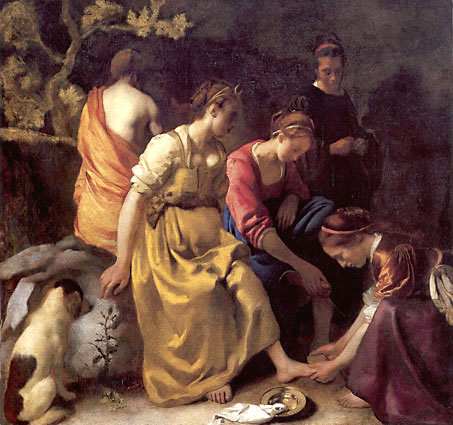Johannes Vermeer, whose career spanned twenty years and whose known oeuvre comprises (at the latest count) just thirty-four pictures, was the least prolific of the great artists. He was also one of the least effusive. Carefully composed and long deliberated, his paintings are exquisite and tantalising in equal measure. Momentary events – the arrival of a guest, the reading of a letter, a music lesson – are made to seem intriguingly momentous. The atmosphere is charged. There is a sense of breath being held and, usually, the implication that something is about to happen. But what, exactly? The painter rarely provides more than the merest hint. Having woven his spell of light, colour and atmosphere, he is loath to break it with anything so deflating as an explanation. Whereas most Dutch artists of the seventeenth century seem only too happy to clarify the meanings of their painted scenes – usually with the heavy underscoring of an instructive moral – Vermeer remains stubbornly reticent, eternally enigmatic. As Lawrence Gowing once observed of him, “There is in his thought… a deep character of evasiveness, a perpetual withdrawal.”
“Vermeer and the Delft School”, the National Gallery’s principal exhibition of the year, previously seen at the Metropolitan Museum of Art in New York, constitutes the latest attempt to pin this most elusive of artists down. The aim of the show is to set Vermeer’s work in the context of seventeenth-century


